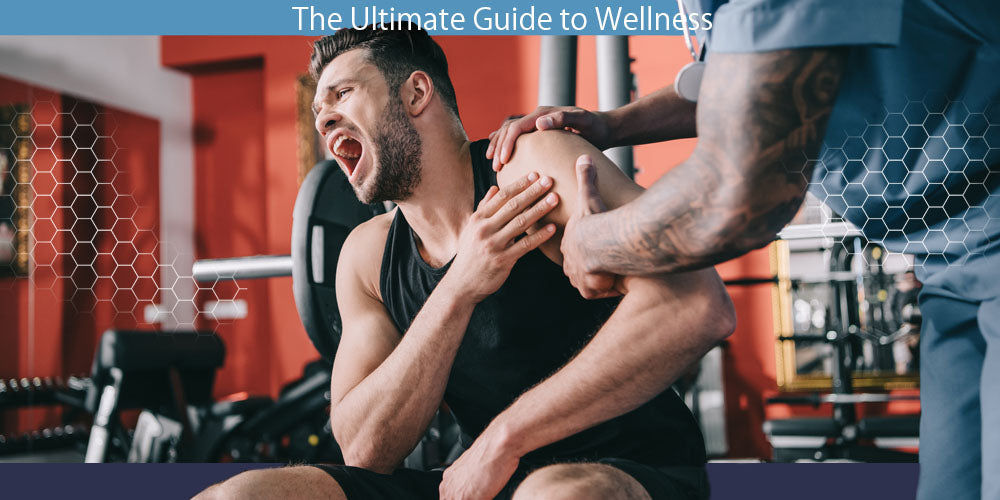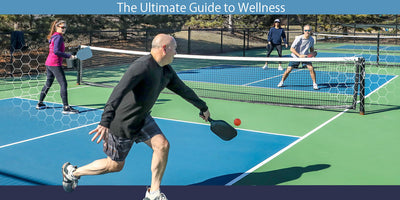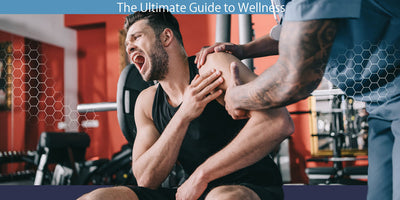A sports injury damages a specific body part due to exercise or athletic activities. While staying active for overall health and wellness is essential, such injuries are relatively common and can happen to anyone at any athletic level. Any part of the body can be injured due to sports-related activities.
Some sports injuries are considered acute – they happen suddenly and usually without warning. You may slip and fall on the basketball court or bang your elbow in the swimming pool. A chronic sports injury develops from overuse of the muscles and joints in the area, repetitive movements, improper form, lack of recovery time between workouts, and the like.
You’ve Been Injured…Now What?
Whether you are suffering from tennis elbow or a twisted ankle, “RICE” therapy is a helpful treatment for mild injuries as a form of self-care. If you start this treatment immediately after a sports injury, recovery time may be faster, with less pain and swelling to slow you down. Naturally, every injury is unique, and it is crucial to seek professional medical help if you believe your injury is serious. If you’re not sure, see your doctor to avoid prolonging recovery.
What is RICE Therapy?
This sports injury treatment doesn’t involve eating rice, although that would be a nice way to recover from an injury! RICE stands for Rest, Ice, Compression, and Elevation.
-
Rest – First and foremost, stop what you’re doing as soon as you feel pain or notice you may have strained or sprained something. Do not return to the activity for 1-2 days until you feel better. Give your body time to rest and repair without causing additional damage. As much as you may want to be active, the rest period is critical for successful recovery.
-
Ice – Ice can help the injured area to relieve pain and reduce swelling. Apply ice wrapped in a towel or cloth to the affected area every couple of hours during the first two days of your sports injury. It is advised not to apply ice directly to the skin to avoid the risk of ice burn/frostbite.
-
Compression – Wrap the injured body part in an elastic compression bandage (like an ACE bandage) to prevent swelling. Not every part of the body will be able to be wrapped, so if you cannot contain the swelling with a wrap, you may want to contact a medical professional for advice on different ways to apply compression.
- Elevation – Elevate the injured body part to decrease swelling and pain. Keep the area lifted above heart level as much as possible immediately following the injury and until swelling and pain subside.
Pain-Relief Medications
NSAIDs (non-steroidal anti-inflammatory drugs) can be obtained over the counter, and they may relieve pain as you recover. Before taking any medication, consult your doctor and follow the dosing recommendations.
Immobilization
At your doctor’s advice, you may need to immobilize the injured body part (with a cast or splint, for example) for a more thorough recovery. Limiting movement won’t aggravate those muscles and joints, and the area can heal more effectively. When you are ready to get back to your routine, take it one step at a time and follow your doctor’s instructions, so you don’t reinjure yourself.
You may require physical therapy to get those muscles and joints back in shape. A trained professional can help you rehabilitate the injured area to resume your activities safely.
Topical Cream for Pain Relief – Ultimate RepairX
A pain relief cream like Ultimate RepairX can be helpful during recovery. Ultimate RepairX is a patented high-potency formula targeting pain caused by conditions and injuries, with restorative ingredients to promote healthy tissue function quickly and effectively. Ultimate RepairX will get you back on your game as soon as possible with no unwanted side effects.
URX is made with a 100% natural and patented matrix of ingredients designed to work in the extracellular matrix (ECM) between cells to alleviate acute and chronic pain and inflammation and restore tissue. Pro athletes, including pickleball’s Callie Smith and Tyson McGuffin, recommend URX…they use it too.
When to Seek Medical Care
If your pain, swelling, bruising, bleeding, or mobility does not resolve within a few hours or days (depending upon the type of injury), seek medical attention.
Once you are feeling better, take it slow. Depending on your sports injury type, recovery can take a few days, weeks, or even months.






